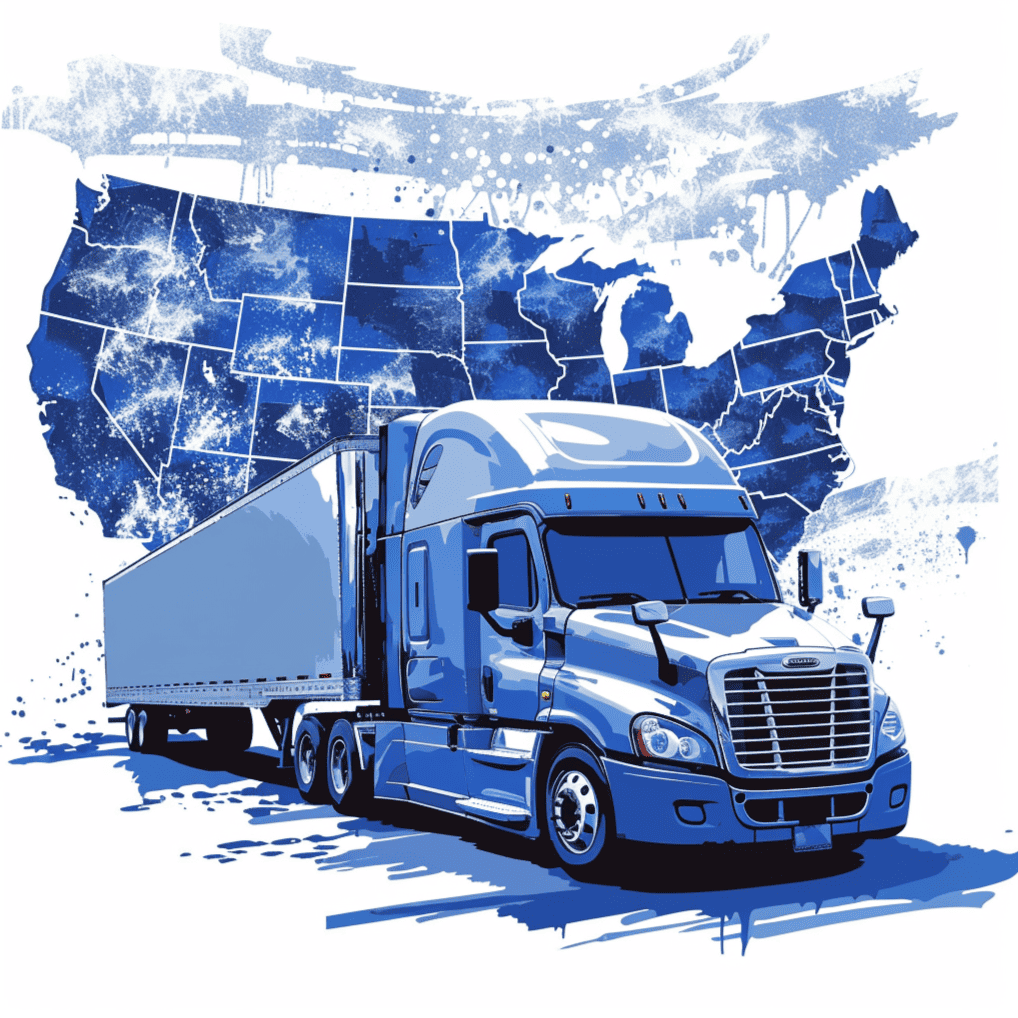Hawaii Truck Restricted Routes
Freedom Heavy Haul can offer expedited Pickup and Delivery for any size shipment anywhere in the USA. Contact us today for No Hassle, No Pressure Pricing.
Hawaii, with its unique geographical and infrastructural challenges, has implemented specific regulations concerning truck weights and restricted routes. These regulations are pivotal for preserving roadways, ensuring safety, and maintaining the state’s environmental integrity. This article explores the intricate balance Hawaii seeks to maintain between commercial transportation needs and the preservation of its infrastructure and natural beauty. In this article, you will learn about Hawaii Truck Restricted Routes and Regulations.
Introduction to Hawaii Truck Restricted Routes and Regulations
The state of Hawaii enforces regulations on truck weights and routes to mitigate roadway damage and enhance safety. With roads that traverse volcanic landscapes and coastal areas, the need for such regulations is more pronounced than in many other regions. This section delves into why these regulations are crucial for Hawaii’s road health and public safety.
Importance of Truck Weight Limits
Truck weight limits are essential for reducing wear and tear on road surfaces, preventing costly damages, and ensuring the safety of all road users. By regulating the weight that trucks can carry, Hawaii aims to prolong the lifespan of its road infrastructure and minimize risks associated with heavy loads.

Overview of Restricted Routes
Hawaii’s strategy to manage heavy vehicle traffic involves designating specific routes that trucks are either encouraged to use or explicitly restricted from using. This approach helps direct traffic flow efficiently, preserving the tranquility and safety of residential areas and ensuring that trucks operate on roads designed to accommodate their size and weight.
Hawaii’s Truck Weight Regulation Framework
This segment outlines Hawaii’s comprehensive framework for truck weight regulation, including axle weight limits and Gross Vehicle Weight (GVW) guidelines. These regulations are designed to protect the state’s roadways from undue stress and degradation.
Axle Weight Limits
In Hawaii, the maximum allowable weight for a single axle is 22,500 pounds, and for tandem axles, it’s 34,000 pounds. These limits are crucial for distributing a truck’s load in a manner that reduces impact on the roads and bridges, safeguarding the infrastructure against excessive wear.
Gross Vehicle Weight (GVW) Limits
The GVW limit—comprising the truck, its cargo, fuel, and any additional equipment—is capped at 80,000 pounds on interstate highways and 88,000 pounds on other highways. These limits reflect the varying capabilities and conditions of Hawaii’s roadway network, ensuring that trucks contribute minimally to roadway degradation.
Differentiation Between Interstate and Other Highways
Hawaii’s regulations account for the differences between interstate highways, which are designed to handle heavier traffic loads, and other roadways. This differentiation allows the state to tailor its weight and traffic management strategies to the specific needs and capacities of its diverse roadways.
Understanding Restricted Routes
The designation of restricted routes in Hawaii aims to streamline traffic flow and protect sensitive areas from the adverse effects of heavy vehicle traffic. This part of the article explores the rationale behind these restrictions and their impact on communities and drivers.
Designation of Truck Routes
Hawaii designates preferred truck routes to optimize traffic flow and minimize the impact of heavy vehicles on less equipped roads. This system ensures that trucks are routed through areas best suited to handle their environmental and infrastructural impacts, promoting efficiency and safety.

Impact of Restrictions on Local Communities
Restricting large trucks from residential and sensitive areas preserves community character, reduces the need for frequent road maintenance, and ensures that trucks travel along designated routes that can safely accommodate them. These measures are key to maintaining the quality of life in Hawaiian communities.
Enforcement of Route Restrictions
The effectiveness of route restrictions depends on stringent enforcement. Hawaii employs a variety of strategies, including signage, weigh stations, and patrol enforcement, to ensure compliance and address violations promptly.
Regulatory Compliance and Enforcement
Compliance with Hawaii’s truck regulations is monitored through a combination of stationary weigh stations and mobile enforcement units. This section discusses the role of enforcement in maintaining the integrity of Hawaii’s regulations and the penalties for non-compliance.
Stationary Weigh Stations and Mobile Units
Hawaii’s use of weigh stations and mobile enforcement units is essential for ensuring trucks adhere to weight limits and route restrictions. These tools are vital for real-time compliance checks and for addressing violations effectively.
Penalties for Non-Compliance
Penalties for non-compliance with Hawaii’s truck regulations include fines and legal actions. These measures underscore the importanceof adhering to the established guidelines for road safety and infrastructure preservation. By enforcing these regulations, Hawaii ensures that its roads remain safe and sustainable for all users.
Impact of Regulations on Road Infrastructure and Safety
The implementation of truck weight limits and restricted routes significantly contributes to the longevity of Hawaii’s roadways and the safety of its inhabitants. This section examines the positive outcomes of these regulations on the state’s infrastructure and public welfare.

Extension of Roadway Lifespan
By limiting the weight of vehicles and directing heavy traffic along designated routes, Hawaii effectively reduces the rate of roadway deterioration. This approach extends the lifespan of roads, minimizes the need for frequent repairs, and ensures a smoother and safer driving experience for all.
Enhancement of Road Safety
The safety benefits of these regulations cannot be overstated. By preventing overloading and ensuring trucks travel on appropriate routes, Hawaii significantly lowers the risk of accidents. These safety measures are particularly important in a state known for its varied and sometimes challenging driving conditions.
Conclusion
The balance Hawaii achieves through its truck weight limits and restricted route regulations exemplifies the state’s commitment to preserving its unique environment and infrastructure while accommodating commercial transportation needs. Understanding and complying with these regulations is essential for truck operators and contributes to the safety and well-being of all road users in Hawaii. This comprehensive approach ensures that the state’s roads remain safe, efficient, and sustainable for generations to come.







